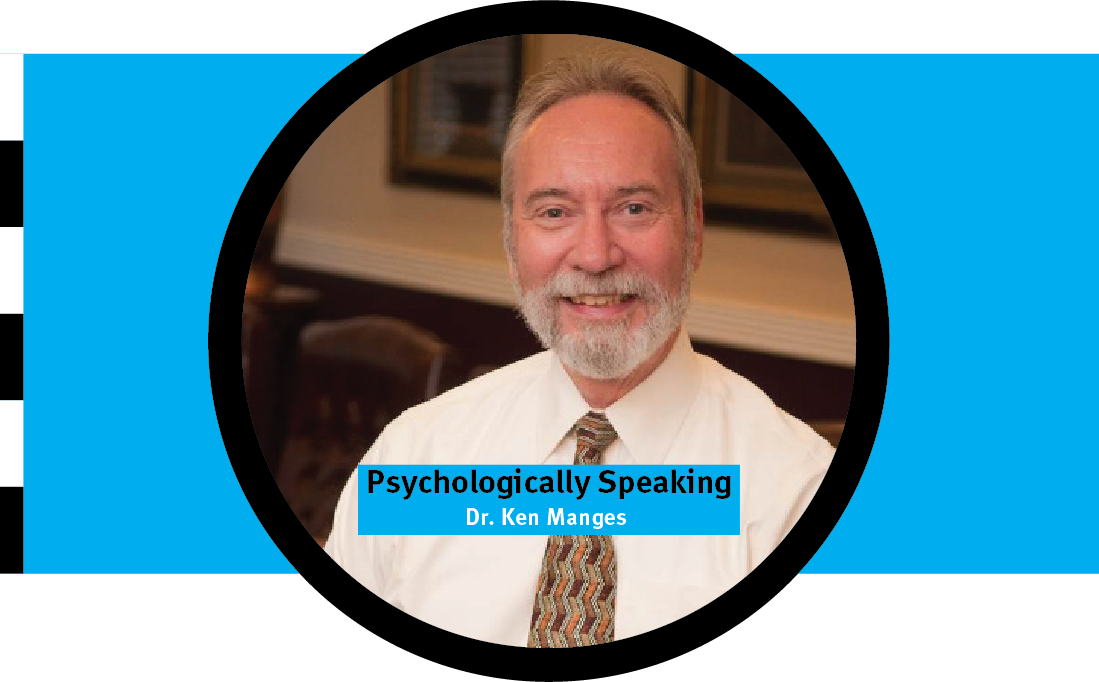As a forensic, I ask the people I interview about how they have reached a conclusion when stressed or frustrated if no one else is around.
I ask if they have carried on a regular silent dialogue with themselves in their decision-making process.
My experience is that we all carry on our own private conversations. Some even admit to talking aloud to ourselves when putting together lists or when frustrated and grappling with a thorny issue in our lives. This is something I do in silence, what about you?
Self-talk can be silent or out loud. Most of us as adults talk to or with ourselves in silence, but whether the words are spoken out loud or silently considered, we all have these conversations throughout the day.
It may be that we are merely noticing someone’s gait, or their style of dress or seeing clouds in the sky then having a passing thought about wishing we had taken our umbrella.
We all have these personal conversations on a routine basis. Some of the time its just a moment but at other times we rehash past conversations or embarrassing moments and there is an endless loop of chatter that is disruptive and exhaustive. That’s when we need to find a shut off valve to an endless stream of consciousness which borders on self-abuse.
Overall, self-talk is the internal dialogue we have with ourselves, and it plays a crucial role in how we process emotions, solve problems and motivate ourselves. It can and does shape our mental landscape, influences our behavior and, when used in a positive way, can impact our overall well-being.
This column explores various aspects of self-talk, including its importance for children, what the science has to say about its usefulness as well as its dangers.
I’ll also talk about the neurological underpinnings and strategies to use to transform our self-talk into a positive force.

The Need for Children to Use Self-Talk
Developmentally, the need for children to use self-talk has been found to be a powerful tool which assists in the thinking process and the focusing of their attention. In his seminal work “Thought and Language,” (translated and published almost a hundred years after his birth in 1987), Russian psychologist and linguist Lev Semyonovich Vygotsky identified how “private speech” helps children to organize their thoughts, plan their actions and regulate their emotions. Originally thought to be a disruptive developmental phenomenon, private speech’s role was found to be a positive influence. Too bad we haven’t incorporated it more frequently as adolescents and adults.
As it turns out, self-talk helps children develop problem solving skills and cognitive abilities because it allows them to verbalize their thoughts and understand the world around them better.
Self-talk can also help with emotional regulation by enabling the child to talk through their feelings. It’s been shown to help reduce anxiety and increase resilience. Interestingly, more recently, in his book “Chatter: The Voice in Our Head Why it Matters and How to Harness It” (2022), Ethan Kross shows the same to be true about self-talk’s usefulness with adults.
Doctor Kross describes self-talk as chatter. “We can think of the mind as a lens and our inner voice as a button that zooms it either in or out. In the simplest sense, chatter is what happens when we zoom in close on something, inflaming our emotions to the exclusion of all the alternative ways of thinking about the issue that might cool us down. In other words, we lose perspective. This dramatically narrowed view of one situation magnifies adversity and allows the negative side of the inner voice to play, enabling rumination and its companions: stress, anxiety, and depression.”
The New York Experiment
If you ever doubted that others talk to themselves and think this column is a conspiracy to make you believe otherwise, let me assure you that scientists have invested hundreds of hours to identify the legitimacy of self-talk.
Over the course of 14 months in 2010, British anthropologist Andrew Irving listened to audio samples of 100+ New Yorkers.
His objective was to gain and understand the private verbal life of his volunteers compared to the work he had done with Africans who were struggling with the death of friends and loved ones who were diagnosed with HIV/AIDS.
He asked the NY volunteers to willingly speak their thoughts aloud into a tape recorder while he filmed them at a distance. The findings showed how their verbalized thoughts helped them to navigate their daily lives.
The recordings showed a rich tapestry of self-talk ranging from the mundane to deep self-reflection. The participants were found to have frequently used self-talk for self-regulation, motivation and emotional expression. The experiment highlighted the pervasive, multifaceted nature of self-talk and showed how it served as a crucial tool for managing daily life.
The Problem When Self-Talk is Negative
It’s been shown by Vygotsky, Kross and Irving that self-talk helps with self-regulation and motivation, but it can also be a source of self-criticism and self-flagellation.
Have you ever made a mistake and mentally beat yourself up? One of the most successful tennis players of all time, Andre Agassi, said it this way “A win doesn’t feel as good as a loss feels bad, and the good feeling doesn’t last as long as the bad. Not even close.”
Self-talk is powerful and when used against us, as with excessive self-criticism, it can lead to feelings of inadequacy and low self-esteem.
Athletes, actors and we ordinary folk can undermine our performance and reduce motivation when our self-talk is turned against us.
Cognitive behavioral therapy (CBT) is one such intervention for those with negative self-thoughts. As suggested by Aaron Beck in his 1976 text “Cognitive Therapy and the Emotional Disorders,” CBT focuses on three important elements, two of which are related to self-talk. They are:
1. Core beliefs
2. Dysfunctional assumptions
3. Negative automatic thoughts.
Changing core beliefs, correcting dysfunctional assumptions (self-talk meanderings) and redirecting negative automatic thoughts (self-talk run amuck) can neutralize negative self-talk and use positive self-talk as a springboard for change.
But There is Hope
Interestingly, when we self-talk, how we do that does make a difference. When asked, and I will ask you now, when you self-talk, does it sound like you’re picking up a conversation midstream? Whenever that happens to me, I interrupt the thought and ask “who’s talking?”
In his 2005 article “Possible Links Between Self-Awareness and Inner Speech: Theoretical Background, Underlying Mechanisms, and Empirical Evidence” in the Journal of Consciousness Studies, Alain Morin found there are three brain sites involved.
The prefrontal cortex is one area, which plays a key role in the generation and regulation of the self-talk. The Broca’s area is a second area, which is responsible for our speech and is engaged as though we are speaking even when we are silently self-talking. And the third area is the anterior cingulate cortex, which is associated with emotion regulation and error detection. It’s engaged in response to negative emotions.
What Does All of This Neuroanatomy Have to Do With Hope?
Based on the work of Ethan Kross in “Chatter,” when you are conscious of self-talk, be active. Engage your thoughts and when you want to motivate yourself say “You can do this.” This creates a psychological distance between the situation and yourself. This can have the effect of reducing anxiety and increasing your objectivity.
If you want nurturance and support from a creditable source use your first name “Sarah, you’ve got this.” This enables you to make the statement personal and impactful as well as giving it a tone of a friend who would comfort you in such a situation. Try it and let me know how it works for you.
My takeaway from this research has been that self-talk is a powerful tool that can significantly impact our mental and emotional well-being. By understanding its role in childhood development, the insights from scientific experiments, the dangers of negative self-talk, and the neurological mechanisms involved, we can better harness its potential.
Moreover, by employing strategies suggested by Ethan Kross to redirect self-talk, such as using different pronouns and addressing ourselves by name, we can transform our inner dialogue into a source of motivation support and positivity.
Be well. Stay safe.
Thanks for reading the column. Please go to the AI website (americanisraelite.com) and post a comment.
Questions? Suggestions? Send me an email at psychology@americanisraelite.com. See you here next month.





